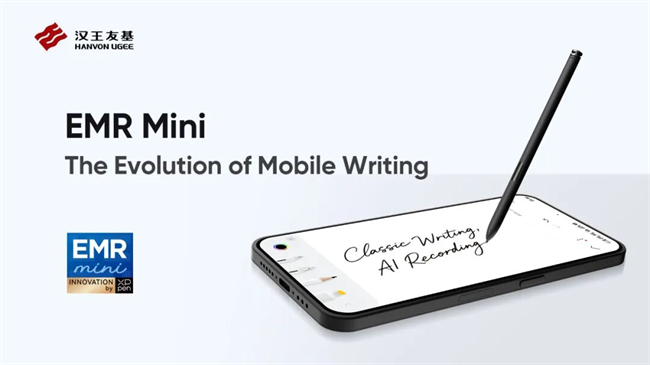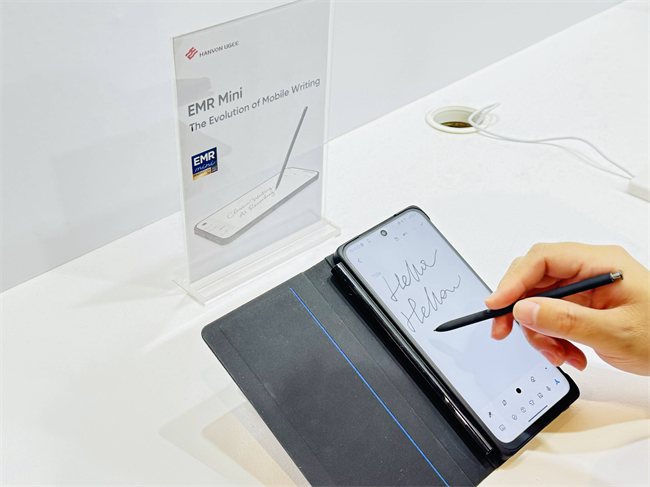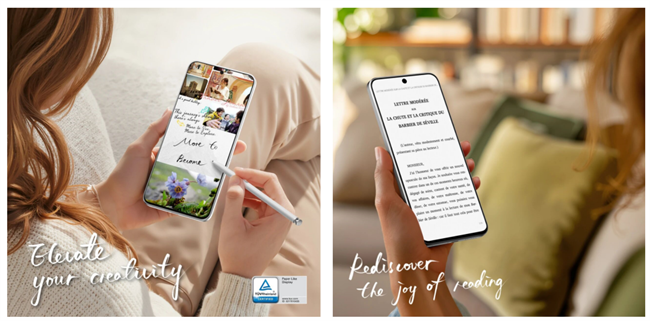Amidst increasing smartphone homogeneity, TCL's new NXTPAPER 60 Ultra stands out in the mid-to-high-end market thanks to its integration of the EMR mini electromagnetic pen solution from UGEE. This technology not only enables precise writing, pressure recognition, and hover sensing, but also delivers a user experience and value far exceeding that of standard phones for professional signatures, creative drawing, and mobile office applications.

Compared to common smartphones like the iPhone, Huawei, and OPPO, the NXTPAPER 60 Ultra differs fundamentally in its hardware architecture. Standard phones utilize a capacitive touch layer that recognizes changes in the electrical charge of a finger or stylus, limiting them to taps and swipes. TCL phones, on the other hand, incorporate an additional electromagnetic coil array embedded beneath the screen. This resonates with a passive coil within the pen tip to achieve pen tip positioning, pressure recognition, and angle sensing. This design eliminates the need for batteries and delivers millisecond-level response times, truly delivering the smooth feeling of "writing on paper."
The difference between the two types of phones is particularly striking in actual user experience.
When drawing and taking handwritten notes, the UGEE EMR pen can detect 4096 levels of pressure. With a light touch, users can create thin lines, while applying a little pressure naturally thickens the handwriting, completely simulating the dynamics of real writing. Conventional capacitive pens, on the other hand, only produce fixed-thickness lines, making fine control difficult.
It also supports tilt sensing and hover recognition, allowing precise cursor positioning with the pen tip 1 cm off the screen. This allows for operations like menu previews and signature confirmation, which is nearly impossible on standard touchscreen phones.

In professional applications, the UGEE EMR mini demonstrates unique advantages.
For example, in scenarios requiring electronic signatures, such as banking, government affairs, and insurance, the EMR pen can capture biometric data such as pen pressure, speed, and acceleration for authentication and anti-counterfeiting traceability, ensuring legal validity. Signatures on conventional phones, on the other hand, are merely graphical records that fail to reflect the signer's handwriting characteristics, resulting in weaker security and compliance.
Furthermore, in applications like Notes and PDF annotation, smooth handwriting input and pressure-sensitive drawing are enabled, making it a crucial tool for mobile office and creative design.
From a user experience perspective, UGEE's EMR technology has evolved mobile phone interaction from "touch-based" to "writing and creation."
Not only can users write, sign documents, and sketch naturally on the screen, but AI recognition also automatically converts handwriting into text. Combined with zero-delay response and excellent anti-mistouch design, the NXTPAPER 60 Ultra's user experience approaches that of a professional digital tablet.
In comparison, while standard smartphones compete fiercely in performance and photography, they still lag significantly behind in the refinement of human-computer interaction and creative experience.

In short, UGEE's EMR technology elevates the TCL NXTPAPER 60 Ultra from being just a phone to a portable digital creation and signing terminal. It combines the natural feel of traditional pen and paper with the efficiency of the digital world, providing a reliable tool for mobile office, electronic signatures, and artistic creation. With the popularization of paperless government affairs and digital signatures, this type of equipment equipped with EMR technology will undoubtedly have a broader market prospect.